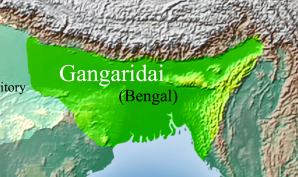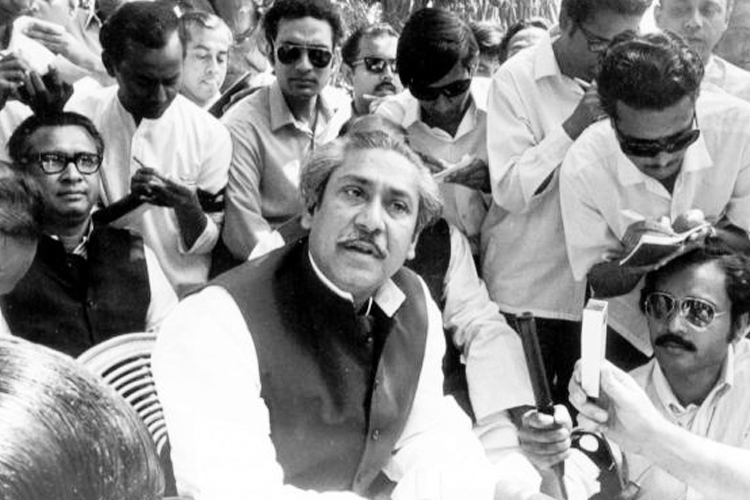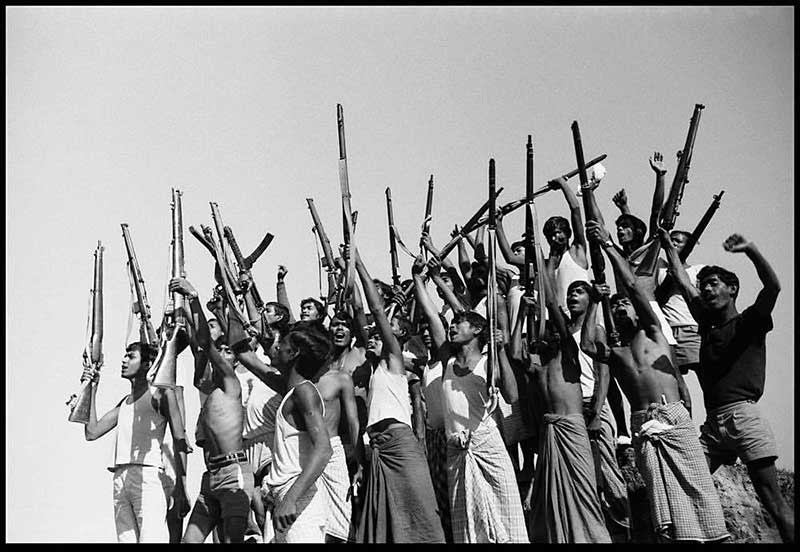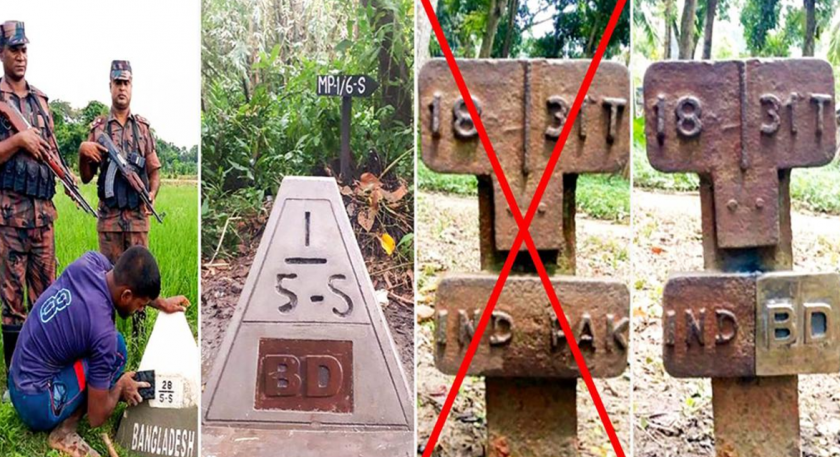Names are a very important part of one's identity. This applies not only to individuals but also to a country. Because the name reveals the thousands of years of history and tradition of a country, region or nation. So the name of a country should never be taken lightly.
Like all other countries, we have a long history of naming Bangladesh. In general, many of us think that people who speak Bengali live, so the name of this country is Bangladesh. But is that all? Not at all. On the contrary, before the acquisition of this name, Bangladesh had to travel a long way.
Bangladesh is found in the writings of the ancient Greeks and Latin. From the first millennium BC, Greek and Latin writings refer to a country or kingdom and people called 'Gangaridai' , which may mean 'rich by the Ganges' or 'Gangariddhi' or 'whose heart is in the Ganges' or 'Gangahridi'. The words 'Gangaridei', 'Gangaridum' and 'Gangarides' were also used instead of 'Gangaridai'.
The Greek traveler Megasthenes mentions this kingdom in his book 'Indica'. According to him, the kingdom was spread over the Bengal region of the Indian subcontinent or across present day Bangladesh and West Bengal in India. Many Greek and Latin historians believe that Alexander's withdrawal from India was due in large part to his fear of the Gangaridai attack . He feared that attacking Gangaridai would have dire consequences.
 A possible map of Gangaridai; Image Source: Wikimedia Commons
A possible map of Gangaridai; Image Source: Wikimedia Commons
Historians Ptolemy and Periplus mention in Greek history that the residence of the king of Gangaridai was in the Ganges. However, the Greek writers did not explicitly mention the exact location of the Ganges, the capital of the Gangaridai king.
Dr. Gaurishankar Dey and Professor Shuvrodeep Dey in their book 'Context: Archaeological Desert Chandraketugarh' have said that Chandraketugarh , an archeological site in North 24 Parganas district of West Bengal, is probably the capital of the famous ancient port-state 'Gangaridai' or 'Ganges' port. Again, some historians of Bangladesh think that Ganges or Gangaridai was the residence of the king on the banks of Kumar river in Khulna. They imagine the present Sundarbans deer ghat as Ganges.
So there is still plenty of room for doubt about Gangaridai and the Ganges, so there could be controversy. Let's take a look at how this Gangaridai came to be known as 'Bangadesh' or 'Banga'.
In the book 'History of Bengalis' Dr. Mohammad Hannan has analyzed the origin of the name 'Banga' from the book 'Riaz-us-Salatin' written by Golam Hossain Salim Zaid Puri between 17-18 . There, in the context of the history of the name Banga, the aspect of Muslim thought-consciousness has been exposed. It is said that in the aftermath of the Flood, Prophet Noah (peace be upon him), 70 men and women, including his wife and children, spread to different parts of the world by the command of Allah, began to reproduce there, and their descendants re-arranged the earth.
Hum, a son of Noah (pbuh), was engaged in procreation in Asia. One of his sons named 'Hindustan' after the name of Hind, 'Sindhu' after the name of Sindh, and 'Bangadesh' after the name of Bengal.
There is also a Hindu mythology behind the naming of Bengal . According to mythology, the name of Bengal comes from the name of the son of King Bali. It is claimed that one of the sons of Raja Bali ruled the region of West Bengal, Khulna and Barisal. Another son ruled Bengal, Dhaka, Mymensingh and Tripura. And the last son Pundra ruled North Bengal and Assam. The territories under their rule are named Anga, Banga and Pundra after this son.
 Flag of Bangladesh; Image Source: Munir Uz Zaman / BBC Bangla
Flag of Bangladesh; Image Source: Munir Uz Zaman / BBC Bangla
In other words, there is considerable controversy over the naming of Bengal. Now we can try to unravel how the name 'Bangla' came from Bengal. Dhaka University Professor of History has recently given an explanation in this regard. Syed Anwar Hossain. According to him, the word 'Bangla' is derived from 'Banga', which was originally a Sanskrit word. The Aryans used to call the region 'Banga'. Later the inhabitants of the region added the Persian suffix 'al' to 'Banga', so that the new form of the word became 'Bangal' or 'Bangalah'.
In this regard, Syed Anwar Hossain has basically accepted the history narrated by the historian Abul Fazl (author of Ain-e-Akbari) and said that during the Muslim rule especially during the Sultanate period from 1338 to 156 AD and after the Mughals occupied Bengal in 158 AD, the region became known as Bangal or Bangalah.
Abul Fazl wrote in Ain-i-Akbari that the word Banga means wetland. Bangalah has been added to Al. Al means not only the ala of the farm (land) but also the meaning of small and big dams. In ancient times, kings used to build huge gardens 10 yards wide and 20 yards wide. Even today, in many places of greater Barisal and Faridpur, the word 'Bangla' is used to mean dams on wetlands. Bengal is a land of floods and rains, so Al (Dam) is closely associated with Bengal.
Whatever it is, later on, when different kings were in power, they gave different names to this Bengal. For example, the last independent Nawab of Bengal Sirajuddaula named the empire consisting of several provinces like Bengal, Bihar, Orissa and Assam as 'Bengal'.
During the British rule, the region was called 'Bengal Presidency'. Then during the Partition of Bengal in 1905 an administrative division took place in the whole of Bengal. The western part of Bengal became 'West Bengal' and the eastern part became 'East Bengal'.
 Bangabandhu opposed naming 'East Pakistan'; Image Source: Anandabazar Archive
Bangabandhu opposed naming 'East Pakistan'; Image Source: Anandabazar Archive
After the partition of the country in 1947, when Bangladesh became part of Pakistan, a new controversy arose over its naming. The rulers of West Pakistan went against the will of the people of Bengal and tried to name it 'East Pakistan'. Until 1954, although the name 'East Bengal' was prevalent on paper, the naming of 'East Pakistan' continued. In view of this, Bangabandhu Sheikh Mujibur Rahman in his speech to the Pakistan Constituent Assembly on 25 August 1955 in Karachi said,
"Sir, you may have noticed that they want to replace East Bengal with 'East Pakistan'. We have repeatedly demanded that you should use [East] Bengali instead of [East] Pakistan. The word 'Bangla' has a history. It has a tradition of its own ... and if East Pakistan has to have a name, then the people of Bengal have to check their opinion.
But even then, on 14 October 1955, the name 'East Bengal' was officially changed to 'East Pakistan'.
The concept of 'Bengali nationalism' has been gaining ground since the mid-1980s. Then came the year 1969, the Ayub fall movement began. At that time in the mass uprising a slogan was regularly given: "Hold the arms of brave Bengalis, make Bangladesh independent." In other words, many people started considering this region as 'Bangladesh'.
The demand for naming 'Bangladesh' was finalized after a speech by President Yahya Khan on 26 November 1979. The main reasoning of those who wanted to change the name 'East Pakistan' was that since one unit in West Pakistan had disintegrated and the former provincial names of Sindh, Balochistan, Punjab and North-West Frontier Region were being revived as administrative units, it was It would no longer be appropriate to name the province 'East Pakistan'.
Then came the discussion meeting organized on 5th December, on the occasion of the 6th death anniversary of Hussain Shaheed Suhrawardy. There the leaders of the time proposed different names for the region. Such as: 'Independent East Bengal', 'Bangla', 'Bengal', 'East Bengal', 'Banga', 'Banga Desh', and 'Bangladesh'. Most of the leaders and activists including Bangabandhu Sheikh Mujibur Rahman were in favor of the name 'Bangladesh'. In the end, the name 'Bangladesh' proposed by Bangabandhu was unanimously accepted by all.
Bangabandhu's declaration is quoted in the book 'Prison Diary' . In the discussion that day, Bangabandhu said,
"Once upon a time there was an attempt to erase the last trace of the word 'Bangla' from the book of this country, from the page of the map forever .... I am announcing from today that the name of the eastern province of Pakistan will be 'Bangladesh' instead of 'East Pakistan'. "
 Bangabandhu finalized the name 'Bangladesh' on 5 December 1979; Image Source: Anwar Hossain Foundation
Bangabandhu finalized the name 'Bangladesh' on 5 December 1979; Image Source: Anwar Hossain Foundation
The next day, on 7 December, news of the naming of 'Bangladesh' was published in various newspapers, and Ataur Rahman Khan made a statement in support of Bangabandhu's naming in 'Pakistan Observer'. Besides, Maulana Bhasani, the spiritual guru of NAP, in a public meeting on December 6, supported the renaming of East Pakistan, saying that from a historical point of view, naming 'Bangladesh' would be right and proper. He also argued that since one unit had broken up, the name 'Bangladesh' should be revived. From then on, even if 'East Pakistan' was to be written in the documents, no one would utter 'East Pakistan'. Everyone used to say 'Bangladesh'.
The name 'Bangladesh' was also used in the declaration of independence in 1971. The name of the independent country 'Bangladesh' was also mentioned in the radio message of Bangabandhu's EPR and later in the declaration of independence from Kalurghat. The subsequent declaration of independence by the Mujibnagar government also states that the name of this country is 'Bangladesh'.
On 16 December 1971, Bangladesh was liberated and victorious. Then on November 4, 1972, when the first constitution was drafted and adopted, the constitutional name of the country was given as 'Bangladesh'.
However, the opposition to the name 'Bangladesh' did not diminish. In 1969, when Bengali politicians were vocal in demanding the naming of 'Bangladesh', Jamaat-e-Islami opposed it. On 31 December 1989, the then US Consulate in Dhaka informed Washington in an airgram message that Jamaat was opposed to naming this 'Bangladesh'. According to the US Consulate, Sheikh Mujibur Rahman, Maulana Bhasani, Ataur Rahman Khan and other Bengali politicians have unanimously demanded the naming of 'Bangladesh'. And Jamaat has pointed to Bengali politicians and criticized their role in introducing Bangla language instead of Urdu.
Besides, the statement of Ataur Rahman Khan in 'Pakistan Observer' in favor of naming 'Bangladesh', a statement of Jamaat against 'Bangladesh' and anti-Bengali language was published on 15 December. There, Mahmood Azam Farooqi, a former MPA and then joint secretary of Jamaat-e-Islami in Karachi, alleged that the demand for naming 'Bangladesh' was a threat to Pakistan's integrity and unity and contained a patriotic tone of separatism. Jamaat leader Farooqi further argued,
"In the past, political leaders of various parties have raised the question of language. They opposed Urdu. However, Urdu was adopted as the national language by consensus. The role of those leaders has widened the divide between the two parts of Pakistan."
Needless to say, by "political leaders of different parties" he meant East Pakistanis, and that is exactly what the US Consulate informed Washington.
 It took 48 years to remove the name 'Pakistan' and establish 'Bangladesh' on the border; Image Source: The Daily Star
It took 48 years to remove the name 'Pakistan' and establish 'Bangladesh' on the border; Image Source: The Daily Star
Another sad fact is that even though Bangladesh became independent in 1971, it took 47 years to remove Pakistan's name from all the border pillars of the country.
It is to be noted that after the partition of India in 1947, the word 'India-Pakistan' was inscribed on more than 6,000 pillars on the border between India and the then East Pakistan. Even after the independence of Bangladesh in 1971, Satkhira, Jessore, Chuadanga, Kushtia, Rajshahi, Chapainawabganj, Naogaon, Panchagarh, Kurigram, Netrokona, Mymensingh, Jamalpur, Sunamganj, Sylhet, Brahmanbaria, Comilla and Chittagong with India . Finally, in September 2019, on the instructions of Prime Minister Sheikh Hasina, the word 'Pakistan' was removed from the pillars and the name 'Bangladesh' was added, the BGB said in a statement.











Comments (0)